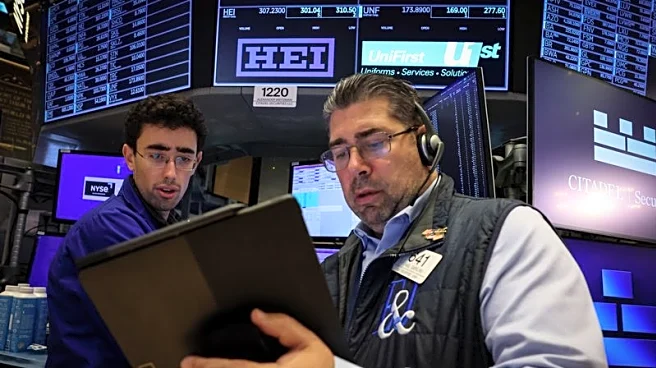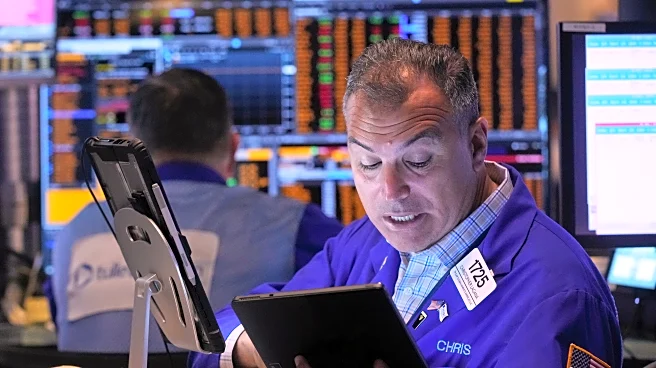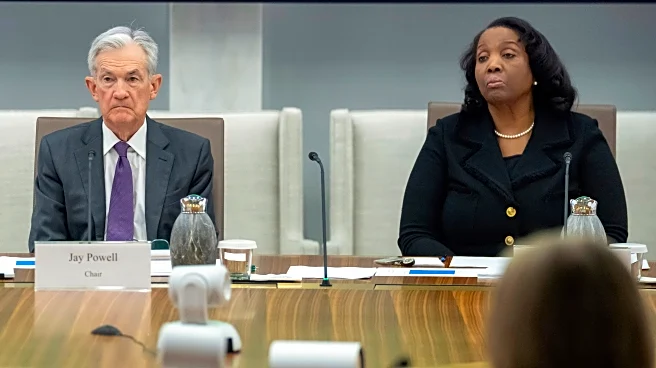What's Happening?
U.S. stocks experienced a significant rally on August 22, following remarks by Federal Reserve Chairman Jerome Powell at the Jackson Hole Economic Symposium. Powell suggested that an interest rate cut might be imminent, stating that the current policy stance could be adjusted due to the shifting balance of risks. This announcement led to a surge in market optimism, with the Dow Jones Industrial Average reaching a new record high. The CME FedWatch tool indicated that the probability of a quarter-point rate cut at the upcoming September policy meeting increased to nearly 90%, up from 71.5% prior to Powell's speech. Lower interest rates typically reduce borrowing costs, potentially stimulating consumer spending and business investments, thereby boosting economic activity.
Why It's Important?
The potential interest rate cut signaled by Powell is crucial for the U.S. economy, as it could alleviate restrictive monetary conditions and foster economic growth. Lower borrowing costs can enhance consumer spending and business investments, which are vital for economic expansion. The stock market's positive response reflects investor confidence in the potential for improved economic conditions. Additionally, the prospect of a rate cut may influence corporate strategies, as companies could benefit from cheaper financing options. This development is particularly significant in the context of recent economic indicators, such as the weak July payrolls report, which have raised concerns about the pace of economic recovery.
What's Next?
The Federal Reserve's next policy meeting in September will be closely watched by investors and economic stakeholders, as it may confirm the anticipated interest rate cut. Market participants will be attentive to any further communications from the Fed that could provide clarity on the future direction of monetary policy. Additionally, businesses and consumers may begin to adjust their financial strategies in anticipation of lower interest rates, potentially leading to increased economic activity. The broader implications for sectors such as housing, consumer goods, and corporate investments will be significant, as they stand to benefit from reduced borrowing costs.
Beyond the Headlines
The potential interest rate cut also raises questions about the long-term implications for inflation and economic stability. While lower rates can stimulate growth, they may also contribute to inflationary pressures if demand outpaces supply. Policymakers will need to balance these factors to ensure sustainable economic expansion. Furthermore, the Fed's decision-making process will be scrutinized for its responsiveness to economic data and its ability to navigate complex economic challenges. The evolving economic landscape may also prompt discussions on the role of monetary policy in addressing broader societal issues, such as income inequality and financial inclusion.













